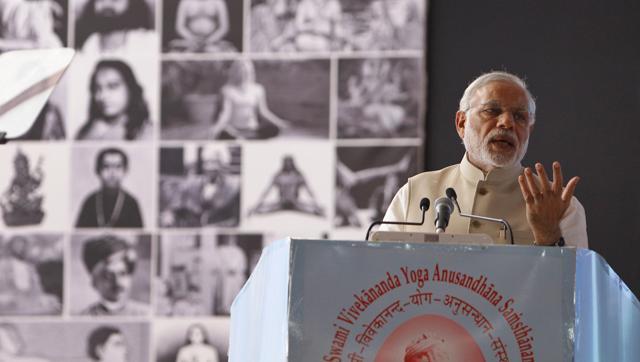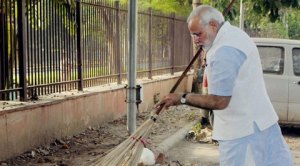Prime minister Narendra Modi
The right diagnosis: India’s medical pluralism has huge potential
![]() Shailaja Chandra | Updated: Jan 11, 2016 21:25 IST
Shailaja Chandra | Updated: Jan 11, 2016 21:25 IST

Prime Minister Narendra Modi was speaking at the recent International Conference on the Frontiers of Yoga, held near Bengaluru, where he uttered words no one, certainly no PM, has had the courage to speak from a public platform. “We must also apply the techniques and methods of modern science, to test and validate results, assure quality and explain benefits,” Modi said before a community of traditional medicine experts and practitioners who had come expecting to hear hosannas in their praise.
He was right. To be a believer and a proponent of traditional medicine is one thing and to get the world to believe in traditional healing is another. In the absence of any tools of measurement, medical claims require proof of safety and effectiveness of outcomes judged by the same standards of research methodology and analysis as set out for modern medicine.
Ayurveda and two other traditional medical systems — Unani and Siddha — have been an undisputed part of India’s approach to medical pluralism for centuries. These systems have been recognised for the grant of medical degrees from 1970 and their medicines have been licensed under the Drugs and Cosmetics Act 1940. Taken together with the drugless therapies of yoga and naturopathy this group totals more than the entire allopathic fraternity presenting a powerful political constituency with direct influence on the community they serve. In 1993, the then PM PV Narsimha Rao, announced the setting up of a new ministry for ayurveda. After encountering bureaucratic resistance he agreed instead to carve out a separate department within the health ministry.
But the new department was not taken seriously by the ministry or its flagship institutions. In 2014, the department was re-christened, as the independent ministry of AYUSH but so far little has changed for the consumer.
And one morning Modi put his finger on the main reason for not gaining primacy, something that traditional medicine proponents have refused to confront for decades: The need to be judged by biomedical standards the world accepts.
Having said it the PM must do more: First, he should direct the CSIR, S&T, DRDO, ICMR and AYUSH to pool funds to promote high-quality clinical research on just 10 therapeutic procedures and formulations that are recognised to have the highest potential for success.
Second, he should direct the health ministry to put signages in clinics and government hospitals seeking volunteers for identified research projects where all costs would be borne by government.
Third, he should dispel the confusion around the prescription of ayurvedic drugs by modern medicine doctors. When all herbal medicines are sold over the counter, why haul up allopathic doctors for prescribing even garlic capsules?
India is sitting on a gold mine of knowledge and experience. Instead of using it to benefit humanity, traditional medicine educationists and practitioners are waiting for their day of recognition. The only way that can happen is if they validate knowledge using the tools of modern scientific research.
Cleaning up sarkar
 It is good that Prime Minister Narendra Modi’s penchant for clean surroundings has been taken seriously. But it will take a lot more for the government’s Augean stables to be cleaned. Here is why.
It is good that Prime Minister Narendra Modi’s penchant for clean surroundings has been taken seriously. But it will take a lot more for the government’s Augean stables to be cleaned. Here is why.
Not very long ago (in 2010, to be precise), I was in Delhi’s just-renovated Sarojini Nagar public library. A well-maintained lawn, gleaming windows, glistening floor tiles, cool air gliding from noise-free air conditioners were welcome additions to a building lined with books. The library was chock-full of readers, so I took the lift to the top floor, which I expected would be empty. It was, in a manner of speaking. My impression of the great transformation that I had seen in the floors below was instantly ruined. Prime space had been used to store not library books, but scores of rusted fan fittings, which had probably been dismantled in the prelude to the renovation. I was told, without any embarrassment, that these were the fans which had been installed when the building was first constructed in 1985. They were now waiting — and had been for over two years — for a three-person condemnation board to meet to certify their irretrievability. “So let it be written, so let it be done.”

The administrative officer of the library was confident that he had selected the most economical warehousing facility to store the 25-year-old fans. Far from having done anything wrong, he had simply followed the General Financial Rules, 2005 (GFRs). The GFRs are sacrosanct and officials must ensure strict compliance. Failure to do so could invite a sharp rap on the knuckles from the comptroller and auditor general. This could be accompanied by the insinuation that there was negligence, or worse, that there was financial misconduct. Given these possible consequences, who on earth would want to stick her neck out to dispose of the government’s junk?
But more importantly, who can remove this yoke from government servants? Only the originator of the rules: the ministry of finance. From the point of view of a clean-up drive, of the 250-odd rules (they originated in 1963 and have been regularly updated since then), perhaps Rules 192 to 200 need to be overhauled first. These are the rules that require the approval of a condemnation board (sometimes called a committee) prior to the disposal of government waste — equipment, furniture, raddi etc — beyond a certain value. Every government office — Central or state, autonomous, attached or subordinate — must follow the GFRs. Although, at face value, the rules seem fairly rational, the detailed explanation of each process is so convoluted that no officer would ever be able to understand, much less implement, them without some handholding.
Take, for instance, the condemnation of government vehicles, an epic saga thanks to the GFRs. Junking a vehicle unless it is at least six and a half years old (10, according to some versions of the rules) or has at least 1,50,000 km of mileage, whichever is more, is prohibited. Since this conundrum can never be resolved, old government vehicles are usually allowed to rust in peace until a death certificate can be obtained from a superior condemnation board.
The obvious solution would be to dispense with staff cars altogether — except for those used by individuals who need security — and replace them with outsourced transport services. The need to first buy new vehicles and then fit them with the driver’s choice of plastic fan, lace curtains, macho-looking chrome fenders and never-to-be-used flagpoles would cease automatically. To say nothing of maintaining a fleet of vehicles whose annual upkeep often exceeds the value of the vehicles themselves. More than the lal batti mindset, it is the culture of being driven around in a sarkari car that needs to change. This way, it will.
But back to the GFRs. Much has been said about repealing antiquated laws; rightly so. But more than changing statutes, many of which have never been used or invoked, there is a pressing need to change the GFRs. Particularly those relating to the disposal of government junk. Because of the way in which they have been written, they actually shield officers from having to take responsibility and encourage the committee culture, which contributes to delays in decision-making. A new government can call the shots for a few months — until the bureaucracy becomes complacent again. All that is needed is for it to be immediately specified that every divisional head of a ministry, department or organisation would be responsible — by name — for ensuring that the unserviceable items belonging to her division are disposed of every two months. This could be done by inviting online quotations and handing the accumulated junk over to the rubbish collector who bids the highest. It is highly unlikely that any officer of the rank of a deputy secretary or lieutenant colonel would put her neck on the line in order to make a deal with kabadis. Public watchdogs and RTI sleuths can, of course, access all the relevant documentation if they suspect hanky panky.
Making junk disposal time-bound and pinpointing responsibility would ensure cleanliness and, additionally, accountability. Before long, an impact would be felt in every government office across the country. The Union finance ministry and state finance departments need to revisit this subject. At stake is valuable space, which could get freed up, and, of course, clean surroundings.